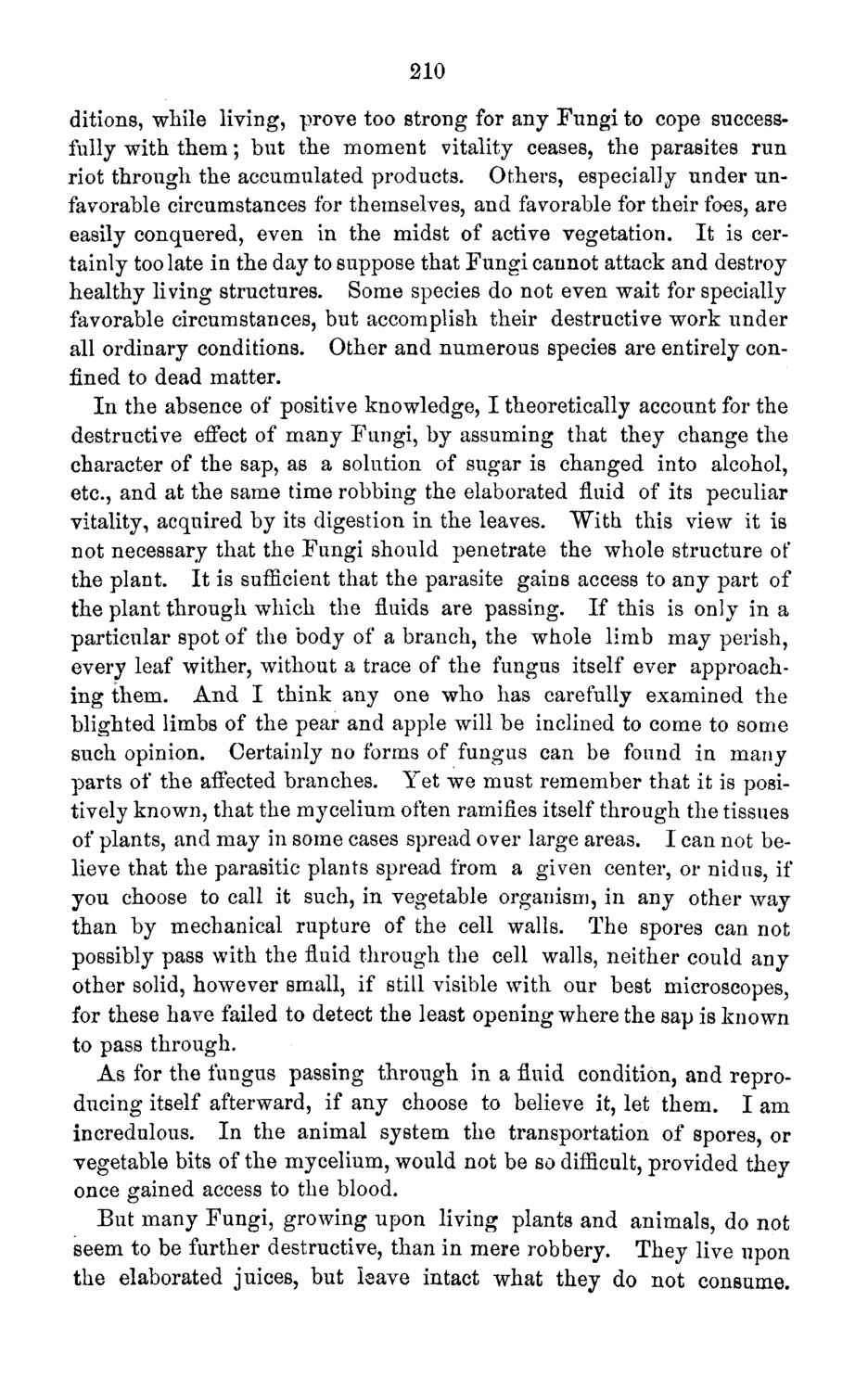| |
| |
Caption: Board of Trustees Minutes - 1871
This is a reduced-resolution page image for fast online browsing.

EXTRACTED TEXT FROM PAGE:
210 ditions, while living, prove too strong for any Fungi to cope successfully with them; but the moment vitality ceases, the parasites run riot through the accumulated products. Others, especially under unfavorable circumstances for themselves, and favorable for their foes, are easily conquered, even in the midst of active vegetation. It is certainly too late in the day to suppose that Fungi cannot attack and destroy healthy living structures. Some species do not even wait for specially favorable circumstances, but accomplish their destructive work under all ordinary conditions. Other and numerous species are entirely confined to dead matter. In the absence of positive knowledge, I theoretically account for the destructive effect of many Fungi, by assuming that they change the character of the sap, as a solution of sugar is changed into alcohol, etc., and at the same time robbing the elaborated fluid of its peculiar vitality, acquired by its digestion in the leaves. With this view it is not necessary that the Fungi should penetrate the whole structure of the plant. It is sufficient that the parasite gains access to any part of the plant through which the fluids are passing. If this is only in a particular spot of the body of a branch, the whole limb may perish, every leaf wither, without a trace of the fungus itself ever approaching them. And I think any one who has carefully examined the blighted limbs of the pear and apple will be inclined to come to some such opinion. Certainly no forms of fungus can be found in many parts of the affected branches. Yet we must remember that it is positively known, that the mycelium often ramifies itself through the tissues of plants, and may in some cases spread over large areas. I can not believe that the parasitic plants spread from a given center, or nidus, if you choose to call it such, in vegetable organism, in any other way than by mechanical rupture of the cell walls. The spores can not possibly pass with the fluid through the cell walls, neither could any other solid, however small, if still visible with our best microscopes, for these have failed to detect the least opening where the sap is known to pass through. As for the fungus passing through in a fluid condition, and reproducing itself afterward, if any choose to believe it, let them. I am incredulous. In the animal system the transportation of spores, or vegetable bits of the mycelium, would not be so difficult, provided they once gained access to the blood. But many Fungi, growing upon living plants and animals, do not seem to be further destructive, than in mere robbery. They live upon the elaborated juices, but leave intact what they do not consume.
| |